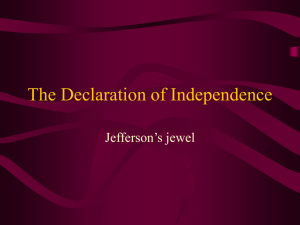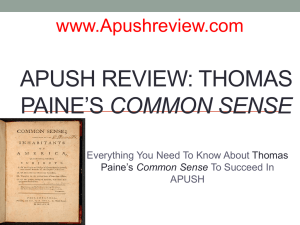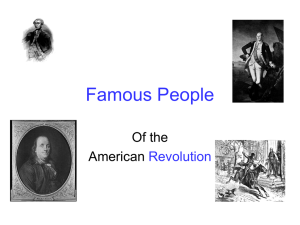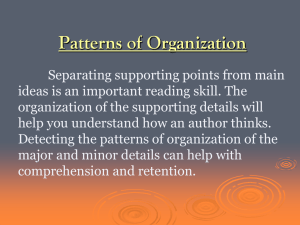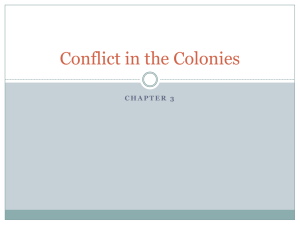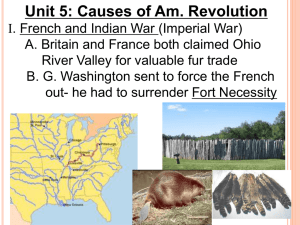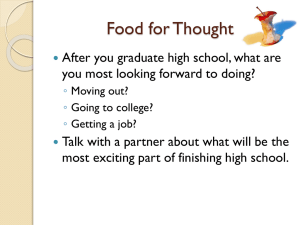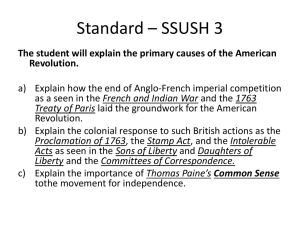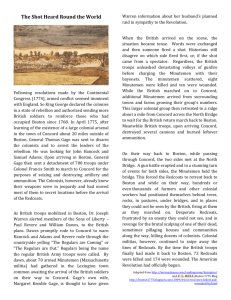Declaration of Independence
advertisement
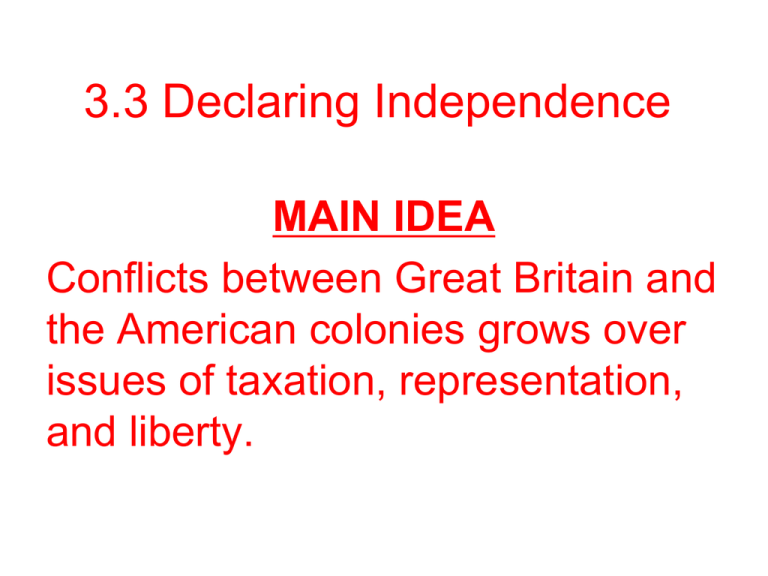
3.3 Declaring Independence MAIN IDEA Conflicts between Great Britain and the American colonies grows over issues of taxation, representation, and liberty. WHY IT MATTERS NOW Colonial protests were the first steps on the road to American independence. CA Standards • 8.1.2 Analyze the philosophy of government expressed in the Declaration of Independence, with an emphasis on government as a means of securing individual rights (e.g., key phrases such as “all men are created equal, that they are endowed by their creator with certain unalienable rights”). • 8.1.4 Describe the nation’s blend of civic republicanism, classical liberal principles, and English parliamentary tradition. • 8.2.1 Discuss the significance of the Magna Carta, the English Bill of Rights, and the Mayflower Compact. Daily Guided Questions (DGQs) 1. What did the colonists mean by “No taxation without representation”? 2. What were the core ideas of the Declaration of Independence? 3. How did Common Sense and the Declaration of Independence draw on British traditions and Enlightenment thinkers? WHY SO ANGRY??? • French and Indian War (Seven Years’ War)- Created large financial crisis, debts. -More Taxation (Acts). • Proclamation of 1763- No western expansion pass the Appalachian Mountains. Sugar Tax, 1764 • Halved the duty (import tax), on British made molasses. -By paying a lower tax, there would be less smuggling, right? • Placed duties on imports that had not been taxed before. • Violators (smugglers) of the tax were tried by vice-admiralty (single English judge) instead by a jury in colonial court. Stamp Act, 1765 • Imposed tax on everything printed on paper. -passed to finance debts. -stamp proved tax was paid. -affected colonists because it directly taxed goods and services. Stamp Act Protests • Colonists response: -Samuel Adams creates “Sons of Liberty” to protest and boycott British goods. • Parliament response: -repealed the act the following year. Townshend Acts, 1767 • Taxed all goods imported from Britain to colonies. • Colonists responded by: -(S.o.L) Demonstrating, protesting, and boycotting. (No taxation without representation!!!). • Parliament responded by: -Stationed troops at major ports to protect customs officers. -repealed the act. Boston Massacre, 1770 • Mob gathered in front of Boston Customs House • Taunts and snowballs thrown (Blocks of ice, stones in snowballs) • British fired and killed five colonists, Cripus Attucks. • Paul Revere engraved scene, antiBritish propaganda. Committees of Correspondence • Discuss threats to freedom, form a network. -7,000-8,000 patriots. • Led to First Continental Congress -30% Loyalist (pro-British). Tea Act, 1773 • Parliament passed it to: -Help the East India Company from bankruptcy. -Company didn’t have to pay taxes. -Everyone (other businesses) else did. • Colonists responded by: -Boston Tea Party, dumped 18,000 lbs. of tea in Boston harbor. • British responded by: -Passed the Intolerable Acts. Intolerable Acts, 1774 • Shut down Boston harbor. • Quartering Act. -Placed General Thomas Gage, new governor of Mass. -Boston placed under martial law (military control). • Parliament passed it to: -Punish colonists for Boston Tea Party. -Control Massachusetts. • Colonists responded by: -First Continental Congress (1774), declaration of colonial rights. -built up militias, George Washington leads. • Parliament responded by: -Marched on Concord to seize illegal weapons, engage colonists in battle, 1775. Lexington and Concord, 1775 • The British (Redcoats) are coming!!! -Paul Revere, William Dawes, Samuel Prescott -Spread the word that 700 “Redcoats” (British soldiers) were headed towards Concord on the night of April 18,1775 • Battle of Lexington. -Dawn of the 19th, 70 minutemen (militia) confronted English. -8 killed, 10 wounded minuteman/ 1 killed redcoat • Battle of Concord. -3000 to 4000 militia men -killed 700 redcoats -headed back to Boston Battle of Bunker Hill • June 17, 1775. • Actually at Breed’s Hill, north of Boston. • Bloodiest battle of the war. • Over 1000 redcoats killed, patriot loss. John Locke • Enlightenment thinker. • Two Treatises of Government, 1690 -Natural rights to life, liberty, and property -Social contract, agreement people consent to choose and obey a government that protected natural rights. -If that government didn’t that the people had a right to resist and overthrown that government. Thomas Paine’s Common Sense, 1776 • Create a better society one free of tyranny (break from the King), with equal social and economic opportunities for all. • Importance of republican government. -power is given to leaders, but power can be taken away. Declaring Independence • Congress -Each colony is to form own gov. -Committee to prepare a formal statement of separation. -Thomas Jefferson chosen to write it. Declaration of Independence, 1776 “We hold these truths to be self-evident, that all men are created equal, that they are endowed by their Creator with unalienable rights, that among them these are Life, Liberty, and the pursuit of Happiness;…” •“self-evident”, to be understood without proof •“all men are created equal”, free citizens are political equals -did not include women, Native Americans, slaves -cruel and injustice of slave trade -S. Carolina and Georgia, take it out or we will not vote for it •“unalienable rights", could not be taken away Dec. of Independence • Preamble -Introduction, reasons for separating with Britain. -Government not protecting their English rights. • Natural Rights -Life, Liberty, and the Pursuit of Happiness Cont. • Grievances Against the King -List of complaints that the colonies have tried to remedy. • Declaring Independence -Since King George III hasn’t done anything to help the situation (actually making it worse sometimes), the colonies are going to “break up” with Britain. Group B • Read the primary source on page 617, Thomas Paine’s, Common Sense and answer the questions at the end. • Copy and complete the study guide on page 25. Use pages 5258 in textbook to get the answers. Group C http://www.pbs.org/ktca/liberty/road_q1. html •Click on the above website and using your notes complete at least half of the game called the “Road to Revolution.” •The other half is a preview of what you will learn about the Revolutionary War.

